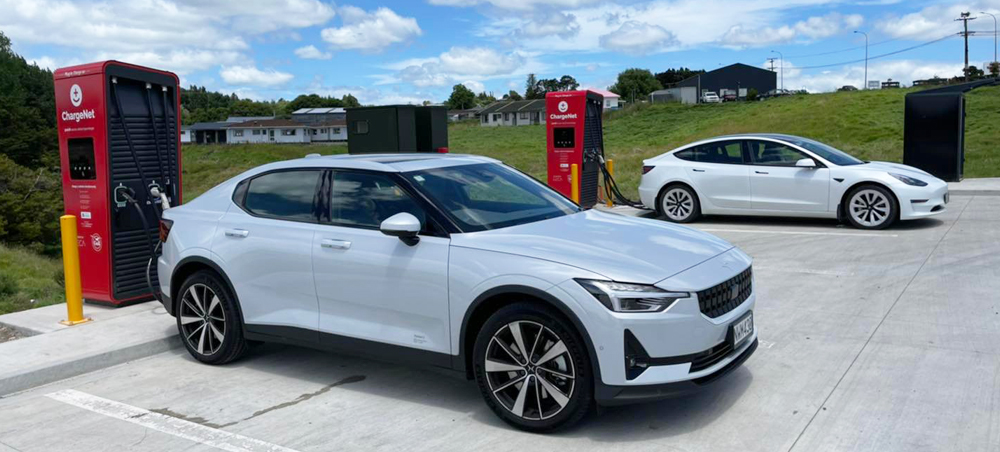
Charging infrastructure pioneer ChargeNet has announced a revision of its pricing structure – the first since it commenced operations.
Gone will be the per-minute charge plus per kWh system, replaced by a simplified per kWh system.
AC charging will cost 40 cents per kWh, while DC charging will cost either 80 or 85 cents depending on the location of the charger.
How the costs impact users will depend on the vehicle and speed of the charger.
FleetTalk’s calculations looking back at our charging history and experience suggest a 24kWh Leaf that takes 40 minutes to take on 20kWh will see their bill go from $15 to $16, a 46kW charge of a BYD Atto 3 taking 42 minutes will go from around $28 to $36, while a 17 minute, 40kWh charge to a BMW iX on an HPC goes from $24 to $32.
An idle fee of $1 per minute will be added, kicking in 5 minutes after charging ends.
The change appears to make less difference to smaller, slower charging vehicles, but more for those that can take advantage of faster charging.
ChargeNet says the move enables the business to simplify its tariff structure for customers and brings the country’s largest EV charging operator in line with comparable overseas networks. The new pricing structure starts on the 30th of November this year.
ChargeNet’s chief operating officer, Martin Miles says the company is removing the per-minute rate at charging stations and replacing it with a pricing structure based on charge point speed and energy consumption.
“A reliable electric vehicle charging network is essential for large-scale EV adoption and so is a simple pricing tariff structure that customers can understand,” says Miles. “It is our belief that customers should only pay for what they use, and the new tariff reflects that ‘pay for what you use’ philosophy,”
“By removing the per-minute component of the tariff, it is fairer on customers because they only pay for the energy they consume based on their location profile and the type of charging they are doing – not how long it takes them to charge their vehicle.
“We want our customers to have the best possible charging experience. Transparency, equity, and simplicity are a key part of that,” he says.
The new pricing tariffs fit into three categories: AC charging, Destination charging, and En route charging. According to Miles, the new tariff structure would see slower-charging vehicles avoid paying higher costs resulting from their need for longer dwell times, while there would be an adjustment to tariffs for faster infrastructure – reflecting the larger investment required to install and maintain it.
Miles says, “AC chargers, which are typically installed in areas where EVs will dwell for long periods, such as public carparks, workplaces, and streetside parking, would attract the lowest tariffs. Our tariffs in this category have not changed.
“Destination chargers – such as those installed at supermarkets – attract a higher tariff, and 25kW, 50kW, and 75kW chargers are going to be consolidated under this category into one single tariff group. This will make it simple for customers to know what to expect when they use our chargers.
“En route chargers – hyper-rapid charging points located on motorways, expressways, and highways – incur the highest tariff. We believe this presents a realistic sense of value to the customer, and they also better reflect the business’ operational costs.”
ChargeNet is continuing to invest in the roll out of EV charging infrastructure and has plans to install more charging points in the years ahead.
Miles also says that customers can anticipate the introduction of idle fees within the next six months, something that customers had overwhelmingly supported in their feedback.
“As more EVs enter the country we want to ensure that more people can charge efficiently on a public network. Idle fees encourage drivers to move on as quickly as possible, reducing queues and creating a better user experience. We also know that it’s something our customers have anticipated and see as beneficial.”








